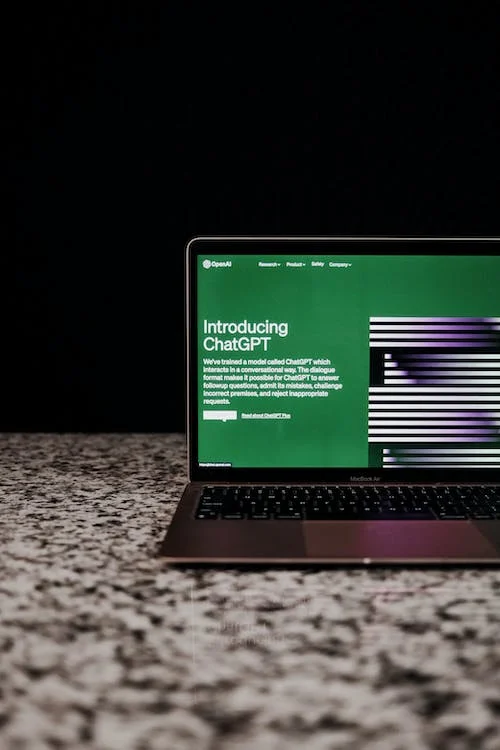
GPT-4, which was launched on March 14, now supports both text and graphics, a major improvement. Moreover, Open AI, a San Francisco, California-based company, claims that as evidence of its language proficiency, it passed the US bar legal test with scores in the ninetieth centile, up from the tenth centile for the previous iteration of ChatGPT. However as of right now, only ChatGPT users who have paid for access may use the technology.
Evi-Anne van Dis, a psychologist at the University of Amsterdam, says that there is now a waiting list, making it impossible for you to utilize it right now. Yet she has seen GPT-4 demonstrations. She saw some films where they showed off their abilities, and it's incredible, she adds. She cites one occasion where GPT-4 utilized a hand-drawn website doodle to generate the computer code required to create that website as proof of its capability to accept pictures as inputs.
Yet the lack of transparency by OpenAI on the model's training process, the data used, and how it really operates has angered the scientific community. Sasha Luccioni, a research scientist at HuggingFace, an open-source-AI community, claims that all of these closed-source models are effectively scientific dead ends. "They [OpenAI] can keep building upon their research, but for the community at large, it’s a dead end."
"Red team" trials
In his capacity as a "red-teamer," or someone hired by OpenAI to test the platform in an effort to make it do something terrible, Andrew White, a chemical engineer at the University of Rochester, has had exclusive access to GPT-4. He claims that he has had access to GPT-4 for the last six months. Early on in the process, it didn't appear all that different from earlier incarnations, according to the expert.
He asked the bot questions about the necessary chemical processes to create a molecule, how to anticipate the reaction yield, and how to choose a catalyst. White admits that initially, he wasn't all that pleased. That truly caught him off guard since it would seem to be so realistic yet would hallucinate an atom. There, it would omit a step, he continues. Nevertheless, when he gave GPT-4 access to academic publications as part of his red-team effort, things drastically altered. That helped to understand that maybe these models aren't all that amazing by themselves. Yet, new sorts of skills suddenly appear when you start linking them to the Internet and devices like a calculator or a retrosynthesis planner.
These skills also raise some doubts. Might GPT-4, for instance, permit the production of hazardous chemicals? According to White, OpenAI programmers updated their model with feedback from users like him to deter GPT-4 from producing harmful, unlawful, or hazardous material.
GPT-4, which was launched on March 14, now supports both text and graphics, a major improvement. Moreover, Open AI, a San Francisco, California-based company, claims that as evidence of its language proficiency, it passed the US bar legal test with scores in the ninetieth centile, up from the tenth centile for the previous iteration of ChatGPT. However as of right now, only ChatGPT users who have paid for access may use the technology.
Evi-Anne van Dis, a psychologist at the University of Amsterdam, says that there is now a waiting list, making it impossible for you to utilize it right now. Yet she has seen GPT-4 demonstrations. She saw some films where they showed off their abilities, and it's incredible, she adds. She cites one occasion where GPT-4 utilized a hand-drawn website doodle to generate the computer code required to create that website as proof of its capability to accept pictures as inputs.
Yet the lack of transparency by OpenAI on the model's training process, the data used, and how it really operates has angered the scientific community. Sasha Luccioni, a research scientist at HuggingFace, an open-source-AI community, claims that all of these closed-source models are effectively scientific dead ends. "They [OpenAI] can keep building upon their research, but for the community at large, it’s a dead end."
"Red team" trials
In his capacity as a "red-teamer," or someone hired by OpenAI to test the platform in an effort to make it do something terrible, Andrew White, a chemical engineer at the University of Rochester, has had exclusive access to GPT-4. He claims that he has had access to GPT-4 for the last six months. Early on in the process, it didn't appear all that different from earlier incarnations, according to the expert.
He asked the bot questions about the necessary chemical processes to create a molecule, how to anticipate the reaction yield, and how to choose a catalyst. White admits that initially, he wasn't all that pleased. That truly caught him off guard since it would seem to be so realistic yet would hallucinate an atom. There, it would omit a step, he continues. Nevertheless, when he gave GPT-4 access to academic publications as part of his red-team effort, things drastically altered. That helped to understand that maybe these models aren't all that amazing by themselves. Yet, new sorts of skills suddenly appear when you start linking them to the Internet and devices like a calculator or a retrosynthesis planner.
These skills also raise some doubts. Might GPT-4, for instance, permit the production of hazardous chemicals? According to White, OpenAI programmers updated their model with feedback from users like him to deter GPT-4 from producing harmful, unlawful, or hazardous material.













